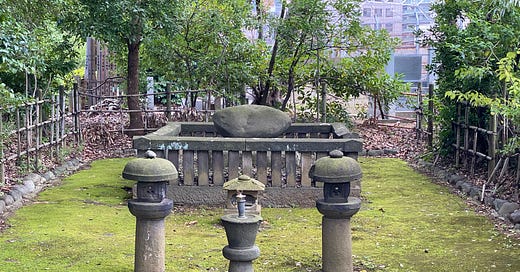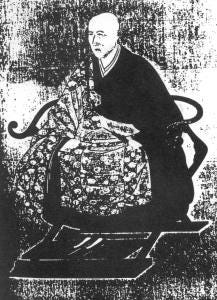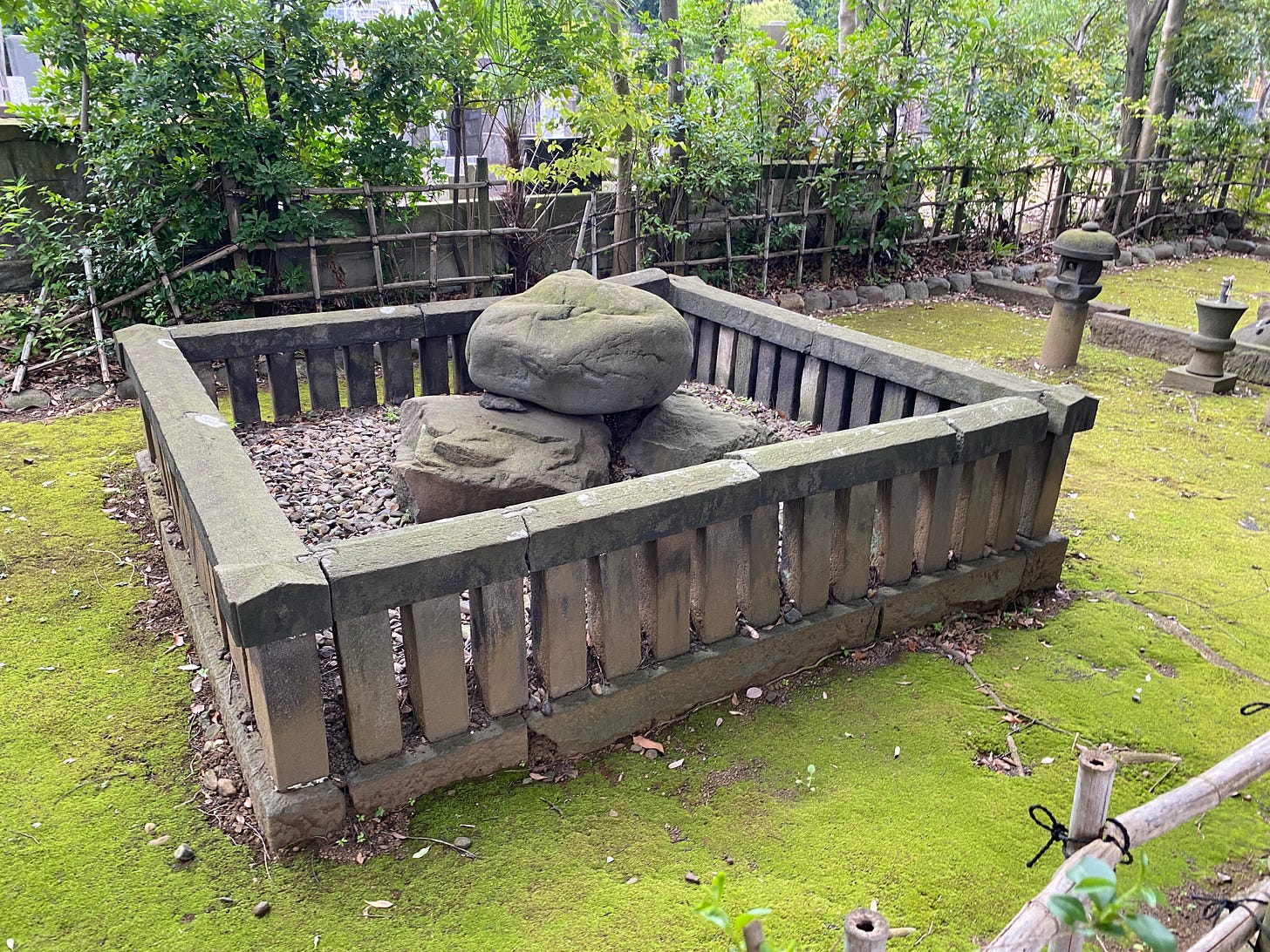Takuan Soho
For most samurai aficionados, the name Takuan is synonymous with the swordsman, Miyamoto Musashi. But who was the real Takuan?
Although not a samurai, the Rinzai sect Zen Buddhist monk Takuan Soho played a major role in shaping the lives and thoughts of many famous and influential warriors. For most samurai aficionados, the name Takuan is synonymous with the great swordsman, Miyamoto Musashi. Takuan was born December 24, 1573 in Izushi, Tajima Province, present-day Toyooka City, Hyogo Prefecture, the second son of Akiba Tsunanori. a senior vassal to Lord Yamana Suketoyo of Tajima Province.
When Takuan was eight, Tajima and the Yamana clan were attacked by Oda Nobunaga and defeated by Nobunaga’s subordinate, Hashiba (Toyotomi) Hideyoshi, and his father was forced to became a ronin. In 1582 aged ten, Takuan became an acolyte at Izushi’s Shoen-ji Temple, initially taking the Buddhist name Shun'o. Four years later, in 1586, he entered the Sokyo-ji Temple, also in Izushi, and studied under Kisen Seido, and changed his name to Hideki. In 1591, after Kisen's death, Lord Maeno Nagayasu, of Izushi Castle, invited Kaoru Hajime Munetada, a disciple of Shun'oku Soen of the Daitoku-ji Temple to become the chief priest of Sokyo-ji Temple, and so Takuan began studying under Kaoru. Kaoru Hajime later became the chief priest of Kyoto’s Daitoku-ji Temple in 1594, and Takuan followed. At the Daitoku-ji he studied under Master Shun'oku Soen at which time he adopted the name Soho.
In 1599 the Toyotomi administration’s magistrate, and soon to be Toyotomi loyalist Western forces defacto leader, Ishida Mitsunari constructed the Zuigaku-ji Temple at his fief of Sawayama Castle to commemorate his late mother. On completion, he asked Shun'oku Soen, a friend since their younger days, to suggest a worthy chief priest. Shun'oku appointed Kaoru to the position, and Takuan accompanied Kaoru to Sawayama, staying there until late 1600 when the castle was attacked and destroyed in the afternath of the Battle of Sekigahara.
Kaoru and Takuan escaped the castle together and took refuge with Shun'oku Soen. Weeks later, Shun'oku and Takuan retrieved the body and head of the executed Ishida Mitsunari in November of 1600, performed funeral rituals and interred him in the Sangen-in Temple. Kaoru Hajime died in 1603, and so Takuan went to Sakai in Izumi Province and became a disciple of Bunsei Tonin. Bunsei died a few months later, and so Takuan studied under Itto Shoteki of the Nanshu-ji temple, and attained Daigo (enlightenment) there on August 4, 1604 at the age of 32, and received the Buddhist name, Takuan. After attaining enlightenment, he was praised by his masters as a "man with a sharp tongue" because his answers were so pertinent.
In 1607, Takuan was made head priest of the Daitoku-ji Temple, and lived there while also serving as the chief priest of Nanshu-ji. In 1609, at the age of 37, he was promoted to the 154th abbot of the Daitoku-ji, but Takuan, who had no desire for responsibility, fame or fortune, left the temple three days later and returned to Sakai after lengthy traveling. During his journeys, he raised funds to renovate the Daitoku-ji and other Zen temples. He returned to his hometown in Izushi around 1620, and established a hermitage at Sukyo-ji Temple, which had been rebuilt by the lord of Izushi, Koide Yoshihide, and began a life of seclusion.
Purple Robe Incident
When the Edo Shogunate was established, temples and shrines became subject to harsher restrictions due to religious and other laws. In particular, restrictions were imposed on influential temples such as the Daitoku-ji, in order to weaken their ties and influence with the Imperial Court. These laws stipulated that the head abbots of these temples, which had previously been decided by imperial edict, would henceforth be decided by the Edo Shogunate, and that the wearing of the purple robes bestowed by the Emperor would be limited only to those approved by the Shogunate.
In 1627, the Shogunate invalidated the imperial sanctions issued by Emperor Go-Mizunoo allowing the wearing of purple robes without consulting the Shogunate, which was considered a violation of the laws. The Edo Bakufu ordered the Kyoto Shoshidai, Chief Magistrates, to confiscate the purple robes. Opposed to this, Takuan, together with fellow monks Tamamuro Sohaku and Kogetsu Sogan, united the monks of Daitoku-ji, Tandenshi-in and Myoshin-ji Temples, and launched an opposition movement. In 1623 he wrote a letter of refutation and submitted this to the shogunate.
As this was against the Shogunate's orders, Takuan and his companions were charged as criminals and were summoned to Edo Castle in 1629. Before Shogun Tokugawa Hidetada, the Shogunate found Takuan and his companions guilty in July of that year, and exiled Takuan to Kaminoyama in Dewa Province, Tamamuro to Akadate (Tanagura) in Mutsu Province, Tanden to Yuri (Honjo) in Dewa Province, and Togen to Tsugaru (Hirosaki) in Mutsu Province. Takuan was 57 years old at the time. According to the Hosokawa Family Records, during the incident, Takuan stated that he had written the document submitted to the shogunate alone and requested that he alone be punished. Impressed by this attitude, the monk and shogunate advisor Tenkai praised Takuan and argued for a lighter sentence.
Toki Yoriyuki, the lord of Kaminoyama Domain where Takuan was exiled, was impressed by Takuan's way of life, which did not side with authority, and his belief that "as long as one's heart is pure, one's physical suffering is of no concern," and so treated him well, even donating a hermitage to him. Takuan named the hermitage Harusame-an and is said to have appreciated it greatly. During his exile, Lord Yoriyuki treated Takuan like a grandfather, even seeking his advice on domain politics. The two men continued to have a close friendship even after Takuan was pardoned.
Hidetada’s Foe to Iemitsu's Friend
In 1632, when Takuan was 60, a general amnesty was issued following the death of the Shogun Tokugawa Hidetada, and thanks to the efforts of the Tokugawa clan advisor, monk Tenkai, Hori Naoyori, Yagyu Munenori and others of influence, those involved in the Purple Robe Incident were pardoned.
Takuan returned to Edo and entered the Kanda Kotoku-ji Temple. However, he was not permitted to return to Kyoto immediately, so he took winter refuge in Hori Naoyori's villa in Komagome, where he remained until the summer of 1634, when he returned to Kyoto and the Daitoku-ji with Tamamuro.
Not long after, Takuan had an audience with the third Shogun, Iemitsu in Kyoto. It is said that a much impressed Iemitsu became deeply devoted to Takuan from this time. The following year, 1635, he was summoned to Edo again by order of the Shogunate. Again Takuan had an audience with Iemitsu along with Tamamuro and Kogetsu, but while the other two were sent home afterwards, Takuan was asked to remain in Edo and became a close personal advisor and attendant to Iemitsu.
While in Edo, Takuan lodged at Lord Yagyu Munenori's lower residence, and, at Iemitsu's request, went to Edo Castle regularly to preach Zen. During this time, he returned to Kyoto often, and in 1638, having lectured Emperor Go-Mizunoo on his Theory of Primitive Man, the emperor indicated that he would be granted the title of Kokushi, Teacher of the Realm. Takuan declined the offer, instead asking that the first abbot of Daitoku-ji, Tetsuo Yoshiyuki, instead be posthumously awarded the title. Around the same time, at the request of Yagyu Munenori, he went to Yagyu Village in Yamato Province and founded the Houtoku-ji, which became the Yagyu clan’s family temple. The following year, in 1639, at the age of 67, he returned to Edo and became the first chief priest of Banshozan Tokai-ji, which had been founded by Iemitsu, so that the shogun could call on Takuan's counsel at any time.
In 1641, Iemitsu officially restored of the freedom of Daitoku-ji and Myoshin-ji, the two temples at the heart of the Purple Robe Incident. As a result, both temples were allowed to continue their traditional promotion and admission into the temple system, and the abbots of Daitoku-ji and Myoshin-ji temples, including Shoin Sochi, the abbot of Daitoku-ji, who had been stripped of their iconic purple robes by the shogunate, had them returned.
Zen
Recognised as a representative Zen monk of his time, Takuan was known for his quick and witty responses and for the fascinating stories he told. He taught Zen teachings by comparing them to ideas, things and concepts familiar to the listener, which endeared him to many people, and so he received the support of many daimyo and aristocrats, including the Shogun, Tokugawa Iemitsu. Despite his fame and success, Takuan maintained an austere Zen manner in which he shunned fame and fortune, stating that he was “just another Zen monk”.
While he did not seek fame or fortune, he did not hesitate to associate with powerful families for the sake of his sect. He served Shogun Iemitsu closely in order to restore the temple laws of Daitoku-ji and Myoshin-ji, and also gave political advice when asked. Because of this attitude, Takuan was sometimes criticized for being too close to the daimyo and warrior caste, but when the temple laws were finally restored in 1641, those critics were admittedly ashamed of their thoughts and comments.
In 1642, Takuan attended a religious debate between the Nichiren and the Jodo sects in Edo. When Iemitsu asked him why the two sects did not get along, Takuan answered, "Both sects have made Buddhism easier to understand in order to preach, and so there are discrepancies in the simplified teachings, and therefore the sect debate becomes a demonstration of the correctness of their own sect. This is not the case with other sects, as their teachings remain unaltered."
In his later years, he was invited to visit the Toyotomi clan in Osaka and various feudal lords including Kumamoto’s Lord Hosokawa Tadaoki, the daimyo of Kii and Hiroshima, Asano Yukinaga, Kuroda Nagamasa and others, but refused them all. It is said that Imperial Prince Takamatsu Yoshihito once visited in the hopes of becoming his disciple, but Takuan refused to meet him too.
When he was invited to tea by Hosokawa Tadaoki, on entering the tea room he immediately recognized that the calligraphy of Daito Kokushi (also known as Shuho Myocho) hanging on the wall was a fake. As a result, Shocho Matsugaku of Daitoku-ji Temple who had forged the work, was excommunicated.
Takuan Pickles
Takuan has been credited with either the creation of the yellow pickled daikon radish known as Takuan, or the introduction of the popular Kansai dish to Edo. According to one theory, Tokugawa Iemitsu was served some yellow pickled daikon radishes when he visited Takuan at Tokai-ji Temple. Iemitsu enjoyed the picked he found to be as sharp as Takuan, and so named the pickles Takuan, but this remains merely a legend.
Takuan’s Relationship with Miyamoto Musashi
Takuan is often linked to Miyamoto Musashi, largely due to Yoshikawa Eiji 's novel, Miyamoto Musashi, in which Takuan plays a key role in mentoring the young Musashi, however there is no record of any contact between Musashi and the monk Takuan. In fact Yoshikawa himself has stated that the relationship between Musashi and Takuan was entirely his own creation for the narrative of the story, and cannot be found in any written sources.
Death of the Zen Master
Takuan passed away in Edo on January 27, 1646, aged 74. At the time of his death, his disciples had asked him to write a farewell poem. As he wrote his last words, the kanji for dream, yume, 夢, he dropped his brush and died.
Takuan had refused requests from Iemitsu and the retired emperor Go-Mizunoo to inherit his teachings, and never appointed a disciple to do so. As such, his style and teachings of Zen died with him. In his posthumously released will, he even wrote that anyone who claimed to have inherited his Zen was a traitor to the law. He also ordered that no records of his achievements or life be left behind. Despite this, his disciple, Takeno Socho, wrote the extant Chronicles of the Tokai Priest. He also left strict instructions that no gravestones should be erected, however his grave, marked only by some large rocks, is located in the ancient graveyard of the Bansho-san Tokai-ji Temple in Shinagawa Ward, Tokyo, which was designated a National Historic Site in 1926. Another grave was erected at the Engaku-san Sokkyo-ji Temple in his home town of Izushi-cho, Toyooka City, Hyogo Prefecture
A Life of Influence
During his life, Takuan befriended, mentored and advised many people of influence including the swordmasters Yagyu Munenori, founder of the Yagyu Shinkage Ryu, and Ito Ittosai, founder of the Itto-Ryu and his successor, Mikogami Tenzen. Incidentally, both schools of swordsmanship served as the official styles of the Tokugawa Shogunate.
Takuan's extant letters to Yagyu Munenori and Mikogami Tenzen are often studied by contemporary martial artists for their insights into Zen and swordsmanship via the Unfettered Mind texts. The Buddhist master Takuan was friends with the Christian daimyo Kuroda Nagamasa, and even the ill fated leader of the Western forces at Sekigahara, Ishida Mitsunari. He lectured and advised the former emperor, Go-Mizunoo, and while he clashed with the second Shogun, Hidetada, Takuan became a close and trusted advisor to the third Shogun Iemitsu.
Takuan remained unaffected by his popularity and reputation. Known for his acerbic wit, honesty and integrity, Takuan brought the spirit of Zen Buddhism to many, and to a range of Japanese culture including samurai swordsmanship, sumi-e ink painting, shodo calligraphy, the tea ceremony and even garden planning.
He left six volumes of writings and over 100 published poems. Takuan enjoyed writing poetry, and was in regular contact with recognised warrior poets, including Hosokawa Yusai and Karasuma Mitsuhiro, asking them to correct his poems. In most cases, they were seen as genius and irreproachable. At Yagyu Munenori's request, he lectured on the connection of sword and Zen in harmony. The three chapter book of essays, the Fudochi Shinmyoroku, literally The Mysterious Record of Immovable Wisdom, and translated into English as the Unfettered Mind, was the first book to explain the application of Zen in regards to the martial arts. Takuan had long been close friends with Munenori, sometimes admonishing him and sometimes relying on him. He was also highly respected by Munenori's son, Yagyu Sangen Jubei.
The son of a samurai, a man of culture and letters, and a Zen master. Takuan is remembered throughout the world thanks to the writings of novelist Yoshikawa Eiji, and for his influence on Zen and samurai swordsmanship.







Very impressive, and what an interesting life!